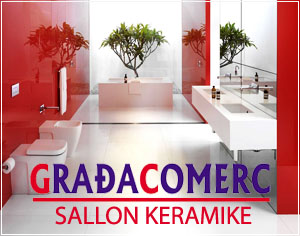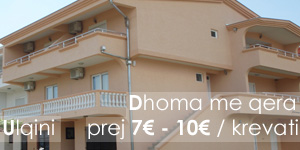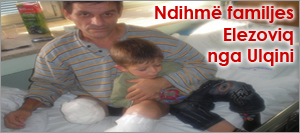Vahida Hasanagic Nimanbegu
The ancient town of Ulcinj or Dulcinium is located on the shore of the Adriatic Sea. It comprises of legendary Kalaja ( The Old Town ),the courts of Balshaj inside, pictoresque bay of Valdanos and is surrounded by the endless sea.
This Mediterranean town recalls many outbursts and battles, queens and kings, including the last Illyrian king Gent, whom it is proud of. In this fortress-town, built on the edged rocks, each stone and wall contains a legend and narrates a story of its own. It was called a town with the shine of the paradise lost, among whose walls traces of ancient Illyrian civilization where found such as: the altar of the goddess of hunting, Artesia, the altar of Bind (god of the sea, according to Illyrian mythology).
In this very silent and ancient town resides and performs talented artist Vahida Nimanbegu-Hasanaga who rises out from the foam of the sea, from waterfalls like Botticelli’s Venus or like an Ulcinian fairy called Nausea to narrate about secrets of water, color of alga, dances of seagulls, the sun and the sky. She also tells a story about fishermen who die a bit by bit every day but live long in legends, epic songs and visual arts.
Vahide Nimanbegu-Hasanaga was born in Tivar, Montenegro, in 1973. She has graduated from the Academy of Applied Arts in Belgrade.She presented herself in several exhibitions and was a project manager of ‚ÄúART DULCINIUM‚ÄĚ art colony;
Range of colors in her paintings, at first sight, have an overwhelming and confusing appeal on one’s senses: how is it possible for such a colorist flame to be unleashed from a very fragile creature, all that disturbance colored with rippling sinuous lines of various nuances. She lines up her tableaus one next to another in such a manner as if proclaiming: this is me in my artistic universe; my aesthetic soul strongly convinced art can humanize the world, make humanity nobler.
This impressive-expressive burst is followed by tableaus with pastoral images painted with a hold on emotions, with an almost infantile creativity.
“I tackle spontaneity, innocence and honesty of a child” ‚Äď says young artist for herself. We may add that this was the aim tackled by Mark Chagall, too.
This is a bit surprising to her but not as much as to stop her spontaneous narration about life, art, music, poetry, and film: Myron, Mozart, Lasgush (Albanian poet), Bergman. In fact, infantile way of expression would fit her sensitive romantic nature best.
Nevertheless, Vahida continues to face challenges, to use motifs from Ulqin, blue sea, cycle of fishes, color of the Mediterranean which in her paintings is a phenomenon with many levels and meanings and can be perceived in many ways: as a color of the sea and the sky, as an aesthetic intonation, as a herald of freedom of soul. This is a modern approach of conveying of motifs, inspirations, anguishes and creative passions.
Only those who live with the sea know its beauty, mystery, but they also know turbulence of the sea. ‚ÄúThe sea has many affectations and changes colors a lot‚ÄĚ-says Vahida.
Truly, this can be spotted in her paintings sharply contoured with subtle colorist details in which the sea is depicted in its slender forms. At times turbulent as well as silent, friendly, esoteric with nuances of verdant, bronze and silver epitomizing the sheer poetry of Vahida’s lyrical vision.
Above all, silent greatness of the sea transmits music. The music of the sea may be sensed only by those who hear the inner voice of nature (Immanuel Kant), cosmic universe and everything inspiring to her creative genius. It It is this very music of the sea and universe that seems to stem out of Vahida’s paintings. Her experience, built over stream of years of work, allows her to easily pass from concrete forms to abstract ones.
Passing from one form to another is fully spontaneous and natural as if in her creative temperament intersect two creatures: rational part depicting organic world in its concrete phenomenology and irrational part depicting the same world in an abstract manner.
In both cases, Vahida uses symbol, the most complex model for sublimation of ideas and concepts. In this way symbolic mood in her paintings entails poetic meanings and tends to become characteristic in her depictions. Using her symbolic poetry and spontaneous susceptibility, she represents the shine of Ulqin seems as if Teuta, the Illyrian queen, appears in a phantasmagoric vision in her paintings.
One conceives the queen with a smile laid on olive branch, releasing profoundly life-enhancing light on Ulqin as a defense against adversity.
In Ulqin beauty is born out of rocks, apparition bears a resemblance with reality.
Critique of Art
Mustaf Ferizi






